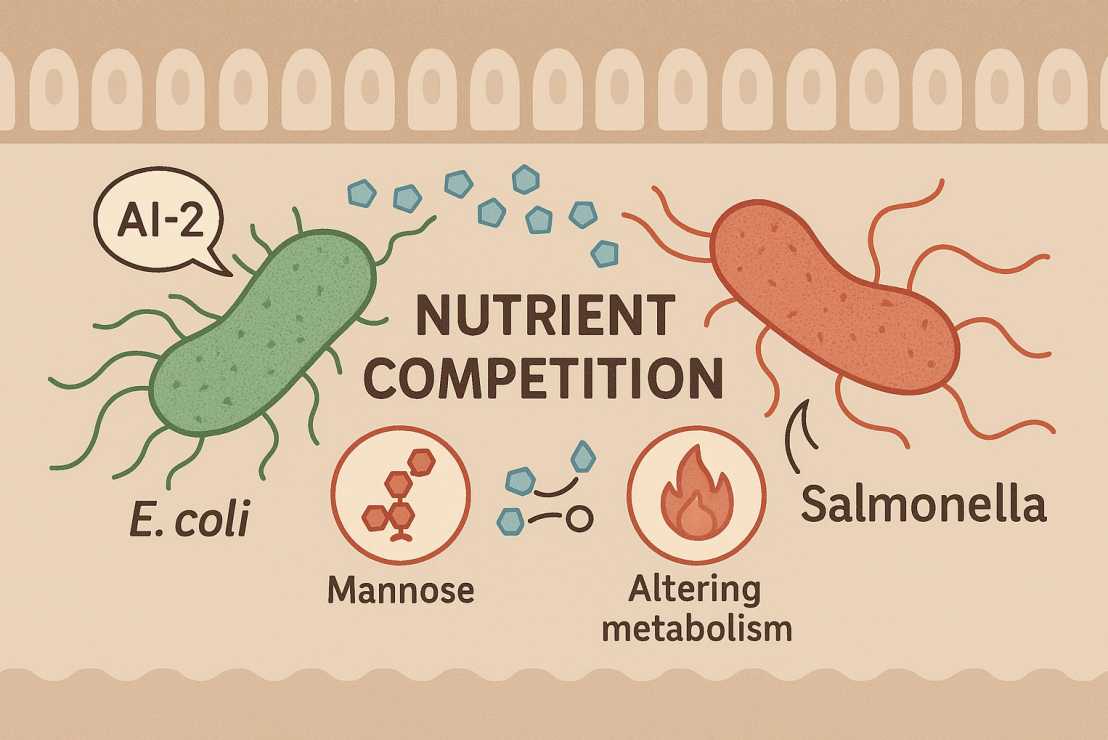Microbial small talk: E. coli and Salmonella fight over the dinner table
A new PLOS Pathogens study by the Hardt (IMB) and Sauer (IMSB) groups shows how chemotaxis, quorum sensing, and metabolism shape E. coli - Salmonella interactions in vivo, affecting mannose use and redox balance at different infection stages.

Bacteria use chemical signals to find the best places to live and grow - especially in complex environments like the gut. One such signal is autoinducer-2 (AI-2), a molecule used by many bacteria to "talk" to each other. Escherichia coli (E. coli), a common gut bacterium, not only produces AI-2 but also moves toward it, which helps it successfully colonize the intestine.
In a new study using a mouse model, researchers at ETH Zurich show that this AI-2 sensing by E. coli gives it a competitive edge against Salmonella Typhimurium (S. Tm), a harmful gut pathogen. When E. coli uses AI-2 to find its niche, it limits the nutrients available to invading Salmonella, making it harder for the pathogen to establish itself. Interestingly, while Salmonella also relies on chemical navigation (chemotaxis), it doesn’t respond to AI-2. Instead, it uses other signals - especially during gut inflammation - to survive alongside resident E. coli.
To understand how this competition affects the growth of Salmonella, the researchers used a special library of genetically tagged Salmonella mutants. They found that AI-2-driven colonization by E. coli mainly affected ability of Salmonella to use specific nutrients, especially mannose in early infection and fumarate later on.
This work highlights a new layer of bacterial competition, where chemical communication influences which microbes win or lose the battle for nutrients in the gut.
Link to the paper in external page PLOS Pathogens.